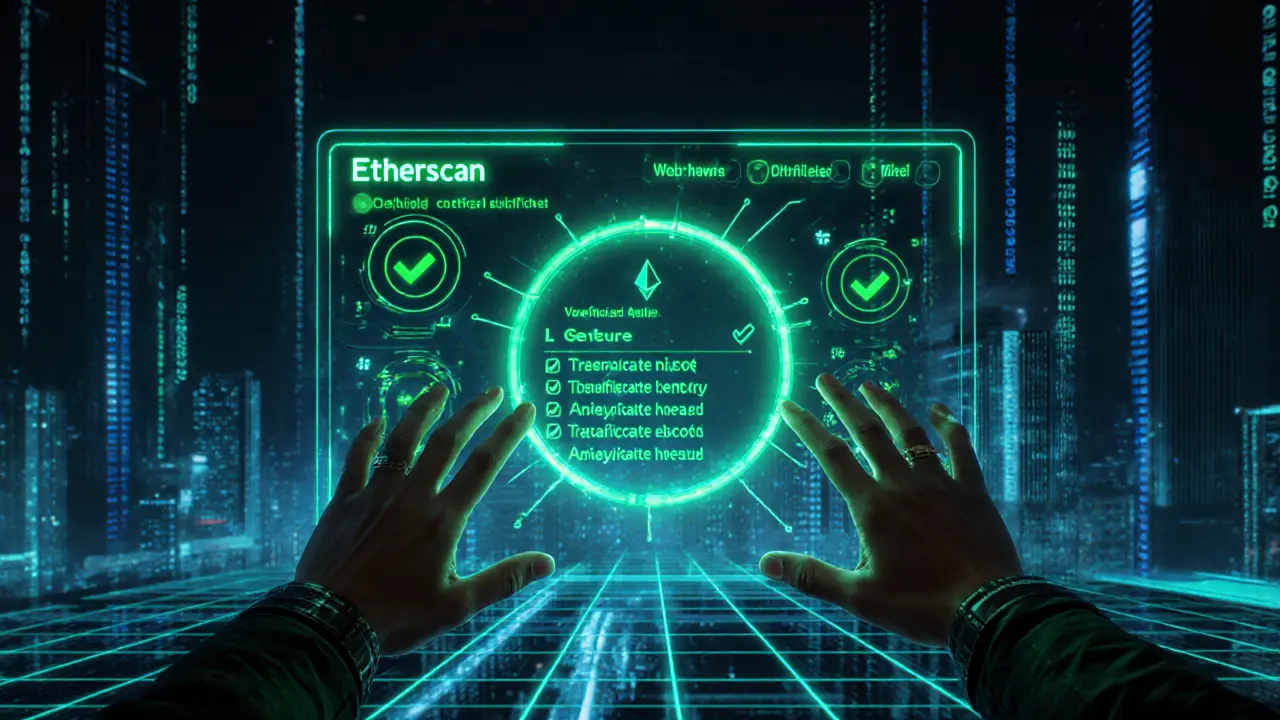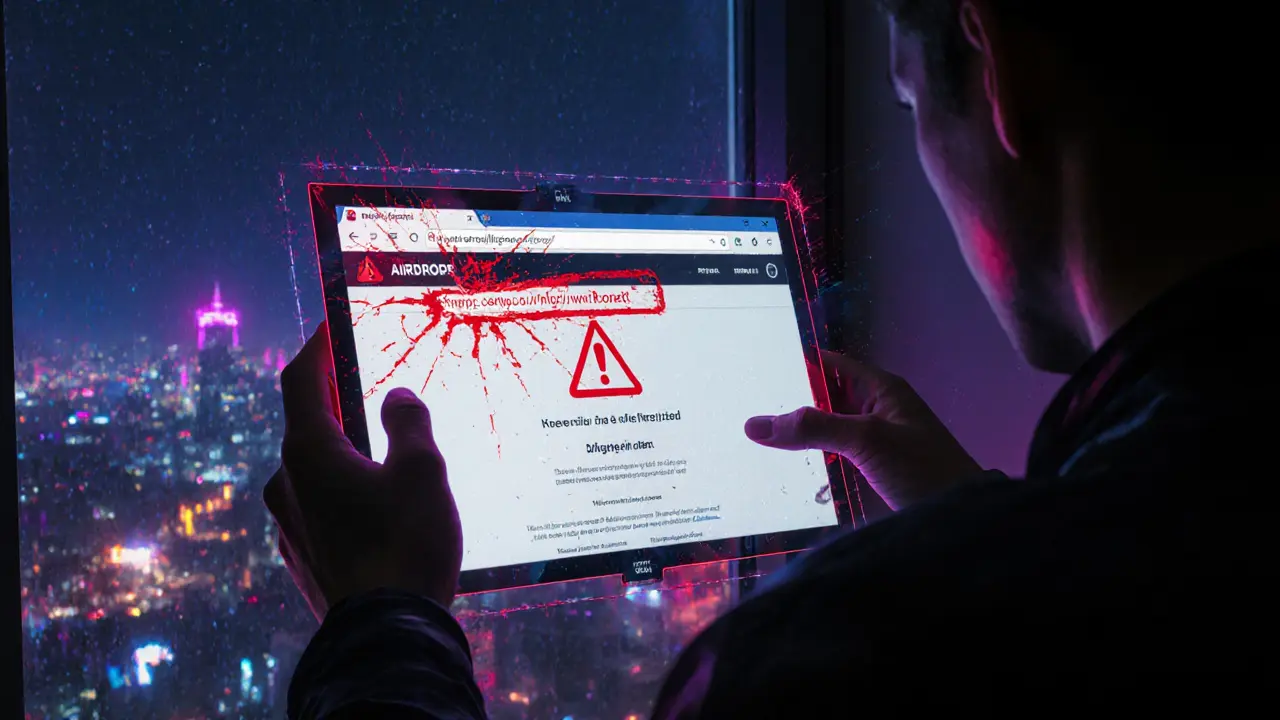Crypto airdrops promise free tokens, but many are scams. If you've heard about the 'CryptoShips' airdrop and can't find official details, that's a red flag. Legitimate projects don't hide their info. Here's how to verify crypto airdrop legitimacy and avoid scams.
Key Takeaways
- Always check for an official website and verified social media accounts before participating in any airdrop.
- Legitimate airdrops never ask for your private keys or seed phrases.
- Verify token contracts using blockchain explorers like Etherscan to confirm they're from a real project.
- If the airdrop isn't listed on CoinMarketCap or CoinGecko, it's likely a scam.
- Small or inactive communities often indicate a fake project.
Check the Official Website
First, look for a legitimate website. Scammers often create fake sites that look real. Check the URL carefully-legitimate sites usually have a clean domain like crypto-ships.io (but in this case, searching for CryptoShips reveals no official site). If the site has poor design, broken links, or lacks detailed information about the project, it's a red flag. Always search for the project's name plus "official website" to find the correct link. For example, a genuine project like CoinMarketCap has a clear, professional site with transparent information.
Verify Social Media Accounts
Scammers create fake social media accounts to trick users. Check for verification badges (blue checkmarks) on platforms like Twitter or Telegram. Legitimate projects usually have active communities with regular updates. If the project's social media has few followers, low engagement, or only promotional posts, it's suspicious. For instance, the Plume Network airdrop has verified accounts with consistent updates and community interaction.

Examine the Token Contract
Legitimate airdrops have a public token contract on the blockchain. Use a blockchain explorer like Etherscan to check the contract address. Look for details like the total supply, token name, and symbol. If the contract is unverified or shows no transactions, it's likely fake. For example, a real token contract on Etherscan shows a history of transactions and a verified source code.
Check CoinMarketCap or CoinGecko
Reputable airdrops are usually listed on major crypto tracking sites. Search for the token on CoinMarketCap or CoinGecko. If it's not listed, that's a strong indicator of a scam. Legitimate projects invest in getting listed on these platforms to build credibility. For example, the GOOD Airdrop Two was listed on CoinGecko before the airdrop began.
Assess Community Activity
Active communities are a sign of a real project. Check Telegram, Discord, or Reddit for the project. Look for consistent activity, knowledgeable admins, and regular Q&A sessions. A fake project will have a small, inactive community. For instance, the Story Protocol airdrop has thousands of active members discussing updates in their Discord server.
Red Flags to Watch For
Be cautious if the airdrop asks for your private keys, seed phrases, or payment to claim tokens. Legitimate airdrops never require you to send crypto to receive free tokens. Also, if the project has no whitepaper, unclear roadmap, or vague team details, it's likely a scam. For example, phishing scams often use fake "claim" pages that steal your wallet credentials when you enter them.
What to Do If You Find a Scam
If you suspect a scam, report it to the platform where you found it (e.g., Twitter, Telegram). Never interact with the scam site or share any personal information. If you've already sent funds, contact your wallet provider immediately. Remember, once crypto is sent, it's usually impossible to recover. Prevention is key-always verify before participating.
How do I know if a crypto airdrop is real?
Check for an official website with a verified domain, look for verified social media accounts, confirm the token contract on a blockchain explorer like Etherscan, and ensure it's listed on CoinMarketCap or CoinGecko. Legitimate projects have transparent information and active communities.
What should I do if I accidentally send funds to a scam airdrop?
Once crypto is sent, it's usually unrecoverable. Immediately stop interacting with the scam site, report it to the platform, and warn others. Change your wallet passwords and enable two-factor authentication to prevent further losses.
Can I get scammed even if the airdrop is listed on CoinMarketCap?
Yes. Some scams copy legitimate projects or create fake listings. Always cross-check details like the token contract address and official social media accounts. CoinMarketCap lists tokens based on market data, not security verification.
Why do scammers create fake airdrops?
Scammers target new crypto users who might not know how to verify legitimacy. They steal private keys, trick people into sending funds, or spread malware. Fake airdrops often promise huge rewards to create urgency and bypass caution.
How can I report a crypto airdrop scam?
Report to the platform where you found it (e.g., Twitter's scam reporting tool). Also, notify crypto security organizations like the Blockchain Association or local authorities if funds were stolen. Sharing details on forums like Reddit's r/CryptoScams helps warn others.

Jenna Em
October 22, 2025 AT 02:11We all chase free tokens like moths to a flame, but the night sky hides predators. The airdrop promise feels like a whisper in a dark room, easy to misinterpret. If the project avoids a proper website, it's a red flag flashing in Morse code. Simple checks can keep us from stepping into a trap. Stay skeptical, stay safe.
Stephen Rees
October 22, 2025 AT 21:38Indeed, the allure is strong yet the background is often murky. I prefer to trust only the sources that wear a badge of verification.
Katheline Coleman
October 23, 2025 AT 17:05It is advisable to commence verification by locating an official domain, preferably one that utilizes HTTPS and bears a recognizable brand name. Subsequently, assess the project’s social media presence for verified markings and consistent engagement. One should also consult blockchain explorers such as Etherscan to corroborate the token contract address. Finally, cross‑reference listings on reputable aggregators like CoinMarketCap or CoinGecko. Adhering to this systematic approach mitigates exposure to fraudulent airdrops.
Amy Kember
October 24, 2025 AT 12:31Check the site look for https check the team list read the whitepaper then move on
Evan Holmes
October 25, 2025 AT 07:58Looks legit on paper.
Isabelle Filion
October 26, 2025 AT 03:25Ah, the noble art of scouring the internet for the next “free” token, a pastime reserved for the truly discerning. One must first locate an official website, a task that is apparently as arduous as scaling Everest for most. If the URL is a jumble of random characters, that alone should raise eyebrows. Next, the social media accounts should bear the coveted blue check, because apparently verification is the holy grail of legitimacy. A project with a handful of followers is basically a ghost town, and who would dare trust ghosts? The token contract, you ask? It should be publicly visible on Etherscan, complete with verified source code and a history of transactions-anything less is a clear sign of a sham. Moreover, the token must be listed on CoinMarketCap or CoinGecko; absence from these sites is practically a scarlet letter. Community activity is another metric; an active Discord or Telegram server suggests real users, not bots. If a project asks for private keys or seed phrases, it has already crossed the line into outright theft. In the rare event that a scam asks for a payment to claim tokens, consider it a direct invitation to part with your funds. Even if a token is listed, remember that listings are not security audits-fraudsters can spoof listings with ease. Cross‑checking the contract address against the official site is a simple yet effective safeguard. Finally, reporting suspicious airdrops to the platform helps protect the broader community. In summary, a combination of domain verification, social media authenticity, blockchain explorer checks, and platform listings forms a robust defense against scams. Should any step raise doubt, the prudent course is to walk away. The cost of a moment’s curiosity can be far greater than the promise of free tokens.
Donnie Bolena
October 26, 2025 AT 22:51Wow! This guide is spot on! 🙌 It breaks down each step clearly, making the whole verification process feel approachable and even fun! Keep sharing these gems, and together we’ll keep the crypto space safer!!!
Elizabeth Chatwood
October 27, 2025 AT 18:18yeah i get it dont stress just follow the steps and u'll be fine
Tom Grimes
October 28, 2025 AT 13:45Honestly i think it's kinda crazy how many people just click without looking, it's like they think the internet will magically protect them, but it doesn't, you gotta actually read the fine print, and check every link, because the scammers are getting smarter every day, and they know exactly what triggers our curiosity, so if you take a minute to verify, you save yourself a lot of trouble later on, trust me, i learned that the hard way.
Paul Barnes
October 29, 2025 AT 09:11Not every airdrop is a scam, some are just under‑the‑radar.
John Lee
October 30, 2025 AT 04:38Sure, a few legitimate projects slip through the cracks, but that’s why we need a balanced approach-scrutinize the contract, yet stay open to hidden gems. The crypto world thrives on discovery, after all.
Jireh Edemeka
October 31, 2025 AT 00:05Oh, because we all love endless warnings that solve nothing. Your checklist is as original as a recycled meme.
del allen
October 31, 2025 AT 19:31i totally feel u 😊 its rough out there but keep looking for the real ones
Jon Miller
November 1, 2025 AT 14:58Drama alert: another fake airdrop just popped up and everyone's losing sleep over it.
Rebecca Kurz
November 2, 2025 AT 10:25Seriously??? Even the so‑called "official" listings could be compromised!!! Who can we trust when the gatekeepers might be in on it???
Nikhil Chakravarthi Darapu
November 3, 2025 AT 05:51Our community must stay vigilant; foreign scams threaten our digital sovereignty.
Tiffany Amspacher
November 4, 2025 AT 01:18In the grand theater of crypto, the villains wear shiny contracts while the audience cheers blindly.
Lindsey Bird
November 4, 2025 AT 20:45Another day, another bogus airdrop-how original.
john price
November 5, 2025 AT 16:11Listen up-if you dont do your own research youre just feeding the scam machine.